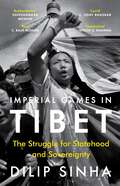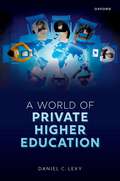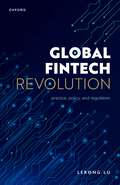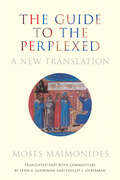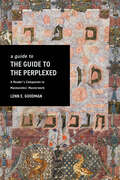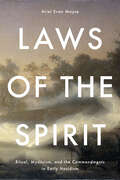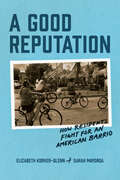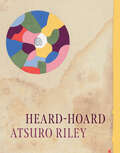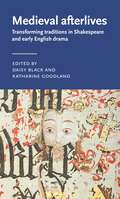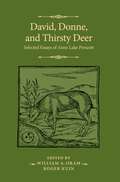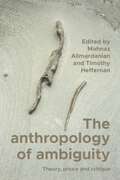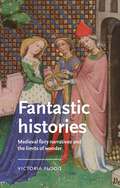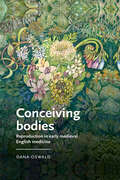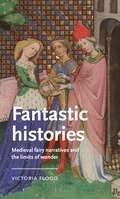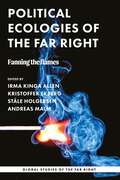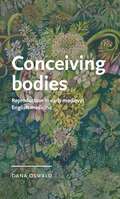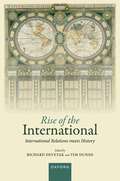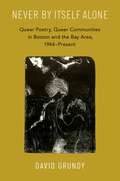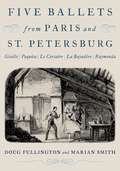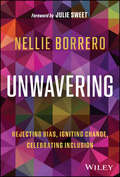- Table View
- List View
Imperial Games in Tibet: The Struggle for Statehood and Sovereignty
by Dilip Sinha'An essential account of how Tibet became the playground for global geopolitical ambitions and what the future may hold for this precarious region fighting for statehood.Renowned as the ‘roof of the world’, Tibet is both a spiritual bastion and a hotbed of geopolitical intrigue. Its unique location, nestled amidst the majestic Himalaya and the vast Central Asian steppes, has historically attracted imperial contenders, thrusting it into the heart of the Great Game – a stormy nineteenth-century contest for supremacy involving Britain, Russia and China.In Imperial Games in Tibet, former ambassador Dilip Sinha deftly guides us through the region’s complex geopolitical entanglements, charting its history from the rise of Tibetan Buddhism, through the cloak-and-dagger machinations of the Great Game, to its fateful invasion and annexation by China in 1950. In the process, he reveals the real factors leading up to the Fourteenth Dalai Lama’s escape to India in 1959 – an epochal event that drew the newly independent nation into this political maelstrom and heightened Sino-Indian tensions. More than seventy years later, despite citizens protests and global outcry, Chinese ‘suzerainty’ maintains its grip on Tibet, begging the question: Can Tibet ever be free?Drawing from this rich historical tapestry, Imperial Games in Tibet highlights the dire consequences of both international exploitation and neglect of the world’s more vulnerable regions. As Tibet continues its struggle for nationhood, it serves as a clarion call to the global community, urging a renewed commitment to human rights and justice.
A World of Private Higher Education
by Daniel C. LevyA World of Private Higher Education is the definitive treatment of a sector accounting for a third of the world's 200 million higher education enrolment--yet remaining largely unknown even to scholars of higher education and widely mis-characterized when it is considered by stakeholders or the general public. Beyond the eye-popping numbers, several inter-related thematic findings regarding the Private and the Public underscore the subject matter's importance. First, private-public differences are significant-it matters that so many students are in a sector that not long ago was only marginal in much of the world. Second, private higher education (PHE) itself is increasingly diverse, with significant and private-private differences. Third, the overlaying of the first two realities yields increasing diversity in private-public higher education distinctions. Especially for its pioneering mapping of PHE globally, regionally, and nationally, the book draws on the pioneering dataset of the pioneering scholarly program for research on PHE (Program for Research on Private Higher Education). Unprecedented in geographical scope, the dataset is unprecedented in longitudinal coverage too, dating back to 2000. Empirical methods allow for extensive analysis, and theoretical analysis draws on key private-public concepts embedded in literatures on privatization, nonprofit studies, and policy models. For the major challenge of penetrating inside the increasingly diverse private sector of higher education, Levy revises his heralded and widely employed PHE typology.
Global Fintech Revolution: Practice, Policy, and Regulation
by Dr Lerong LuLerong Lu examines the biggest change in modern financial industry - the Fintech (financial technology) revolution - that denotes the close interaction between the financial services industry and latest information technologies such as big data, cloud computing, blockchain, and artificial intelligence. The three areas of banking institutions, online lending marketplaces, and money and payment systems are explored to assess how financial innovations affect the traditional financial industry, what kinds of regulatory challenges arise, and how global policymakers react to such challenges. With in-depth and international case studies on Fintech, including app-based banking services, mobile payments, P2P lending, and cryptocurrencies, the global Fintech hubs in six continents are assessed. The complex, dynamic, and multidimensional Fintech ecosystem is also investigated including its key players (such as regulatory strategy, regulatory sandbox, and RegTech) and Fintech corporations (including financial holding companies, Fintech unicorns, BigTech firms, and Metaverse platforms). Lu highlights the enormous benefits for financial institutions and their consumers and argues that Fintech contributes to a more equal, democratic, inclusive, and sustainable financial system. However, he also considers the risks and multiple legal, ethical, and regulatory challenges for policy-makers and financial authorities that Fintech has posed.
A World of Private Higher Education
by Daniel C. LevyA World of Private Higher Education is the definitive treatment of a sector accounting for a third of the world's 200 million higher education enrolment--yet remaining largely unknown even to scholars of higher education and widely mis-characterized when it is considered by stakeholders or the general public. Beyond the eye-popping numbers, several inter-related thematic findings regarding the Private and the Public underscore the subject matter's importance. First, private-public differences are significant-it matters that so many students are in a sector that not long ago was only marginal in much of the world. Second, private higher education (PHE) itself is increasingly diverse, with significant and private-private differences. Third, the overlaying of the first two realities yields increasing diversity in private-public higher education distinctions. Especially for its pioneering mapping of PHE globally, regionally, and nationally, the book draws on the pioneering dataset of the pioneering scholarly program for research on PHE (Program for Research on Private Higher Education). Unprecedented in geographical scope, the dataset is unprecedented in longitudinal coverage too, dating back to 2000. Empirical methods allow for extensive analysis, and theoretical analysis draws on key private-public concepts embedded in literatures on privatization, nonprofit studies, and policy models. For the major challenge of penetrating inside the increasingly diverse private sector of higher education, Levy revises his heralded and widely employed PHE typology.
The Guide to the Perplexed: A New Translation
by Moses MaimonidesA landmark new translation of the most significant text in medieval Jewish thought. Written in Arabic and completed around 1190, the Guide to the Perplexed is among the most powerful and influential living texts in Jewish philosophy, a masterwork navigating the straits between religion and science, logic and revelation. The author, Rabbi Moses ben Maimon, commonly known as Maimonides or as Rambam, was a Sephardi Jewish philosopher, jurist, and physician. He wrote his Guide in the form of a letter to a disciple. But the perplexity it aimed to cure might strike anyone who sought to square logic, mathematics, and the sciences with biblical and rabbinic traditions. In this new translation by philosopher Lenn E. Goodman and historian Phillip I. Lieberman, Maimonides' warm, conversational voice and clear explanatory language come through as never before in English. Maimonides knew well the challenges facing serious inquirers at the confluence of the two great streams of thought and learning that Arabic writers labeled 'aql and naql, reason and tradition. The aim of the Guide, he wrote, is to probe the mysteries of physics and metaphysics. But mysteries, to Maimonides, were not conundrums to be celebrated for their obscurity. They were problems to be solved. Maimonides' methods and insights resonate throughout the work of later Jewish thinkers, rationalists, and mystics, and in the work of philosophers like Thomas Aquinas, Spinoza, Leibniz, and Newton. The Guide continues to inspire inquiry, discovery, and vigorous debate among philosophers, theologians, and lay readers today. Goodman and Lieberman's extensive and detailed commentary provides readers with historical context and philosophical enlightenment, giving generous access to the nuances, complexities, and profundities of what is widely agreed to be the most significant textual monument of medieval Jewish thought, a work that still offers a key to those who hope to harmonize religious commitments and scientific understanding.
A Guide to The Guide to the Perplexed: A Reader’s Companion to Maimonides’ Masterwork
by Lenn GoodmanIn this volume, noted philosopher Lenn E. Goodman shares the insights gained over a lifetime of pondering the meaning and purpose of Maimonides' celebrated Guide to the Perplexed. Written in the late twelfth century, Maimonides' Guide aims to help religiously committed readers who are alive to the challenges posed by reason and the natural sciences to biblical and rabbinic tradition. Keyed to the new translation and commentary by Lenn E. Goodman and Phillip I. Lieberman, this volume follows Maimonides' life and learning and delves into the text of the Guide, clearly explaining just what Maimonides means by identifying the Talmudic Ma'aseh Bereshit and Ma'aseh Merkavah with physics and metaphysics (to Maimonides, biblical cosmology and theology). Exploring Maimonides' treatments of revelation, religious practice and experience, law and ritual, the problem of evil, and the rational purposes of the commandments, this guide to the Guide explains the tactics Maimonides deployed to ensure that readers not get in over their heads when venturing into philosophical deep waters.
The Guide to the Perplexed: A New Translation
by Moses MaimonidesA landmark new translation of the most significant text in medieval Jewish thought. Written in Arabic and completed around 1190, the Guide to the Perplexed is among the most powerful and influential living texts in Jewish philosophy, a masterwork navigating the straits between religion and science, logic and revelation. The author, Rabbi Moses ben Maimon, commonly known as Maimonides or as Rambam, was a Sephardi Jewish philosopher, jurist, and physician. He wrote his Guide in the form of a letter to a disciple. But the perplexity it aimed to cure might strike anyone who sought to square logic, mathematics, and the sciences with biblical and rabbinic traditions. In this new translation by philosopher Lenn E. Goodman and historian Phillip I. Lieberman, Maimonides' warm, conversational voice and clear explanatory language come through as never before in English. Maimonides knew well the challenges facing serious inquirers at the confluence of the two great streams of thought and learning that Arabic writers labeled 'aql and naql, reason and tradition. The aim of the Guide, he wrote, is to probe the mysteries of physics and metaphysics. But mysteries, to Maimonides, were not conundrums to be celebrated for their obscurity. They were problems to be solved. Maimonides' methods and insights resonate throughout the work of later Jewish thinkers, rationalists, and mystics, and in the work of philosophers like Thomas Aquinas, Spinoza, Leibniz, and Newton. The Guide continues to inspire inquiry, discovery, and vigorous debate among philosophers, theologians, and lay readers today. Goodman and Lieberman's extensive and detailed commentary provides readers with historical context and philosophical enlightenment, giving generous access to the nuances, complexities, and profundities of what is widely agreed to be the most significant textual monument of medieval Jewish thought, a work that still offers a key to those who hope to harmonize religious commitments and scientific understanding.
Laws of the Spirit: Ritual, Mysticism, and the Commandments in Early Hasidism (Stanford Studies in Jewish History and Culture)
by Ariel Evan MayseThe compelling vision of religious life and practice found in Hasidic sources has made it the most enduring and successful Jewish movement of spiritual renewal of all time. In this book, Ariel Evan Mayse grapples with one of Hasidism's most vexing questions: how did a religious movement known for its radical views about immanence, revelation, and the imperative to serve God with joy simultaneously produce strict adherence to the structures and obligations of Jewish law? Exploring the movement from its emergence in the mid-1700s until 1815, Mayse argues that the exceptionality of Hasidism lies not in whether its leaders broke or upheld rabbinic norms, but in the movement's vivid attempt to rethink the purpose of Jewish ritual and practice. Rather than focusing on the commandments as law, he turns to the methods and vocabulary of ritual studies as a more productive way to reckon with the contradictions and tensions of this religious movement as well as its remarkable intellectual vitality. Mayse examines the full range of Hasidic texts from the eighteenth and early nineteenth centuries, from homilies and theological treatises to hagiography, letters, and legal writings, reading them together with contemporary theories of ritual. Arguing against the notion that spiritual integrity requires unshackling oneself from tradition, Laws of the Spirit is a sweeping attempt to rethink the meaning and significance of religious practice in early Hasidism.
Laws of the Spirit: Ritual, Mysticism, and the Commandments in Early Hasidism (Stanford Studies in Jewish History and Culture)
by Ariel Evan MayseThe compelling vision of religious life and practice found in Hasidic sources has made it the most enduring and successful Jewish movement of spiritual renewal of all time. In this book, Ariel Evan Mayse grapples with one of Hasidism's most vexing questions: how did a religious movement known for its radical views about immanence, revelation, and the imperative to serve God with joy simultaneously produce strict adherence to the structures and obligations of Jewish law? Exploring the movement from its emergence in the mid-1700s until 1815, Mayse argues that the exceptionality of Hasidism lies not in whether its leaders broke or upheld rabbinic norms, but in the movement's vivid attempt to rethink the purpose of Jewish ritual and practice. Rather than focusing on the commandments as law, he turns to the methods and vocabulary of ritual studies as a more productive way to reckon with the contradictions and tensions of this religious movement as well as its remarkable intellectual vitality. Mayse examines the full range of Hasidic texts from the eighteenth and early nineteenth centuries, from homilies and theological treatises to hagiography, letters, and legal writings, reading them together with contemporary theories of ritual. Arguing against the notion that spiritual integrity requires unshackling oneself from tradition, Laws of the Spirit is a sweeping attempt to rethink the meaning and significance of religious practice in early Hasidism.
A Good Reputation: How Residents Fight for an American Barrio
by Elizabeth Korver-Glenn Sarah MayorgaA historic Houston barrio provides an illuminating lens on neighborhood reputation. Neighborhoods have the power to form significant parts of our worlds and identities. A neighborhood’s reputation, however, doesn’t always match up to how residents see themselves or wish to be seen. The distance between residents’ desires and their environment can profoundly shape neighborhood life. In A Good Reputation, sociologists Elizabeth Korver-Glenn and Sarah Mayorga delve into the development and transformation of the reputation of Northside, a predominantly Latinx barrio in Houston. Drawing on two years of ethnographic research and in-depth interviews with residents, developers, and other neighborhood stakeholders, the authors show that people’s perceptions of their neighborhoods are essential to understanding urban inequality and poverty. Korver-Glenn and Mayorga’s empirically detailed account of disputes over neighborhood reputation helps readers understand the complexity of high-poverty urban neighborhoods, demonstrating that gentrification is a more complicated and irregular process than existing accounts of urban inequality would suggest. Offering insightful theoretical analysis and compelling narrative threads from understudied communities, A Good Reputation will yield insights for scholars of race and ethnicity, urban planning, and beyond.
Heard-Hoard
by Atsuro RileyWinner of the Alice Fay di Castagnola Award from the Poetry Society of America, this collection of verse from Atsuro Riley offers a vivid weavework rendering and remembering an American place and its people. Recognized for his “wildly original” poetry and his “uncanny and unparalleled ability to blend lyric and narrative,” Atsuro Riley deepens here his uncommon mastery and tang. In Heard-Hoard, Riley has “razor-exacted” and “raw-wired” an absorbing new sequence of poems, a vivid weavework rendering an American place and its people. At once an album of tales, a portrait gallery, and a soundscape; an “inscritched” dirt-mural and hymnbook, Heard-Hoard encompasses a chorus of voices shot through with (mostly human) histories and mysteries, their “old appetites as chronic as tides.” From the crackling story-man calling us together in the primal circle to Tammy figuring “time and time that yonder oak,” this collection is a profound evocation of lives and loss and lore.
Medieval afterlives: Transforming traditions in Shakespeare and early English drama (Manchester Medieval Literature and Culture)
by Daisy Black and Katharine GoodlandA collection of essays which show how early drama traditions were transformed, recycled, re-used and reformed across time to form new relationships with their audiences. Medieval afterlives brings new insight to the ways in which peoples in the sixteenth century understood, manipulated and responded to the history of their performance spaces, stage technologies, characterisation and popular dramatic tropes. In doing so, this volume advocates for a new understanding of sixteenth-seventeenth century theatre makers as highly aware of the medieval traditions that formed their performance practices, and audiences who recognised and appreciated the recycling of these practices between plays.
David, Donne, and Thirsty Deer: Selected Essays of Anne Lake Prescott (The Manchester Spenser)
by Anne Lake PrescottFor nearly half a century Anne Lake Prescott has been a force and an inspiration in Renaissance studies. A force, because of her unique blend of learning and wit and an inspiration through her tireless encouragement of younger scholars and students. Her passion has always been the invisible bridge across the Channel: the complex of relations, literary and political, between Britain and France. The essays in this long-awaited collection range from Edmund Spenser to John Donne, from Clément Marot to Pierre de Ronsard. Prescott has a particular fondness for King David, who appears several times; and the reader will encounter chessmen, bishops, male lesbian voices and Roman whores. Always Prescott’s immense erudition is accompanied by a sly and gentle wit that invites readers to share her amusement. Reading her is a joyful education.
The anthropology of ambiguity
by Mahnaz Alimardanian Timothy HeffernanThis volume puts ambiguity and its generative power at the centre of analytical attention. Rather than being cast negatively as a source of confusion, bewilderment or as a dangerous portent, ambiguity is held as the source of the dynamic between knowledge and experience and of certainty amid uncertainty. It positions human life between the realms of mystery and mastery where ambiguity is understood as the experience and expression of life and part of navigating the human condition. In turn, the tension between the tradition in anthropology of examining cultural certitudes through ethnographic description and efforts to challenge dominant expressions of incertitude are explored. Each chapter presents ethnographic accounts of how people engage individually and collectively with the self, the other, human-made institutions and the more-than-human to navigate ambiguity in a world affected by viral contagion, climate change, economic instability, labour precarity and (geo)political tension.
The anthropology of ambiguity
by Mahnaz Alimardanian and Timothy HeffernanThis volume puts ambiguity and its generative power at the centre of analytical attention. Rather than being cast negatively as a source of confusion, bewilderment or as a dangerous portent, ambiguity is held as the source of the dynamic between knowledge and experience and of certainty amid uncertainty. It positions human life between the realms of mystery and mastery where ambiguity is understood as the experience and expression of life and part of navigating the human condition. In turn, the tension between the tradition in anthropology of examining cultural certitudes through ethnographic description and efforts to challenge dominant expressions of incertitude are explored. Each chapter presents ethnographic accounts of how people engage individually and collectively with the self, the other, human-made institutions and the more-than-human to navigate ambiguity in a world affected by viral contagion, climate change, economic instability, labour precarity and (geo)political tension.
Fantastic histories: Medieval fairy narratives and the limits of wonder (Manchester Medieval Literature and Culture)
by Victoria FloodFantastic Histories explores the political and cultural contexts of the entry of fairies to the historical record in twelfth century England, and the subsequent uses of fairy narratives in both insular and continental history and romance. It traces the uses of the fairy as a contested marker of historicity and fictionality in the histories of Gerald of Wales and Walter Map, the continental mirabilia of Gervase of Tilbury, and the fourteenth- and fifteenth-century French Mélusine romances and their early English reception. Working across insular and continental source material, Fantastic Histories explores the practices of history-writing, fiction-making, and the culturally determined boundaries of wonder that defined the limits of medieval history.
Conceiving bodies: Reproduction in early medieval English medicine (Manchester Medieval Literature and Culture)
by Dana OswaldDespite reliance on ingredients like horse dung, Old English remedies for women’s medicine speak to contemporary reproductive concerns. Previous translators reduced the remedies to a general category of women’s medicine, but sustained examination of language reveals important distinctions: remedies for menstruation indicate social concerns about fertility, where remedies for ‘cleansing’ do not provide a clear path to conception, but rather foreclose it. Rarest of all are the remedies for childbirth, but their rarity is compounded by the practices of translators who conflate the language for women’s reproduction into an amorphous singularity. Through an original method of hysteric philology—the combining of traditional philology with contemporary feminist and medical epistemologies—this book situates itself in the historical treatment of reproductive people as both objects and subjects of medical practice, and gestures forward in time to the contemporary struggle for bodily autonomy.
Fantastic histories: Medieval fairy narratives and the limits of wonder (Manchester Medieval Literature and Culture)
by Victoria FloodFantastic Histories explores the political and cultural contexts of the entry of fairies to the historical record in twelfth century England, and the subsequent uses of fairy narratives in both insular and continental history and romance. It traces the uses of the fairy as a contested marker of historicity and fictionality in the histories of Gerald of Wales and Walter Map, the continental mirabilia of Gervase of Tilbury, and the fourteenth- and fifteenth-century French Mélusine romances and their early English reception. Working across insular and continental source material, Fantastic Histories explores the practices of history-writing, fiction-making, and the culturally determined boundaries of wonder that defined the limits of medieval history.
Political ecologies of the far right: Fanning the flames (Global Studies of the Far Right)
by Andreas Malm Kristoffer Ekberg Irma Kinga Allen Ståle HolgersenThis volume engages with the alarming convergence of far right thinking and the ecological crisis in contemporary society. Growing out of the first international conference on political ecologies of the far right, the volume gathers crucial insights from authorities in the field as well as promising early career researchers. With cases ranging from ethnographical accounts of fossil fuel populist protest, historical analysis of the evangelical support for fossil fuels to interrogations of the settler colonial identities and material conditions defended by far right actors around the world, the book provides scholars, students and activists with ways to understand and counter these developments.
Political ecologies of the far right: Fanning the flames (Global Studies of the Far Right)
by Andreas Malm Kristoffer Ekberg Irma Kinga Allen Ståle HolgersenThis volume engages with the alarming convergence of far right thinking and the ecological crisis in contemporary society. Growing out of the first international conference on political ecologies of the far right, the volume gathers crucial insights from authorities in the field as well as promising early career researchers. With cases ranging from ethnographical accounts of fossil fuel populist protest, historical analysis of the evangelical support for fossil fuels to interrogations of the settler colonial identities and material conditions defended by far right actors around the world, the book provides scholars, students and activists with ways to understand and counter these developments.
Conceiving bodies: Reproduction in early medieval English medicine (Manchester Medieval Literature and Culture)
by Dana OswaldDespite reliance on ingredients like horse dung, Old English remedies for women’s medicine speak to contemporary reproductive concerns. Previous translators reduced the remedies to a general category of women’s medicine, but sustained examination of language reveals important distinctions: remedies for menstruation indicate social concerns about fertility, where remedies for ‘cleansing’ do not provide a clear path to conception, but rather foreclose it. Rarest of all are the remedies for childbirth, but their rarity is compounded by the practices of translators who conflate the language for women’s reproduction into an amorphous singularity. Through an original method of hysteric philology—the combining of traditional philology with contemporary feminist and medical epistemologies—this book situates itself in the historical treatment of reproductive people as both objects and subjects of medical practice, and gestures forward in time to the contemporary struggle for bodily autonomy.
Rise of the International
by Prof Richard Devetak Prof Tim DunneInternational Relations and History were once academic fields sharing a common concern with the affairs of empires, states, and nations. Over the course of the twentieth century, however, they drifted apart. International Relations largely retained the focus on the affairs and relations of these principal international actors but took a methodological turn leading to higher levels of theoretical abstraction. History, on the other hand, retained the methods that define the discipline but shifted the focus, veering away from matters of state to the vast array of actors, events, activities, and issues that colour everyday life. In recent years, the drift has been arrested by scholars in each discipline who have turned towards the other discipline in their research. International Relations has undergone a 'historiographical turn' while History has taken an 'international turn'. Rise of the International brings together scholars of International Relations and History to capture the emergence and development of the thought, the relations, and the systems that have come to be called international in western discourse. The evidence offered by contributors to the volume suggests there has been no single, stable, unchanging concept or object of theoretical reflection or historical investigation that can be called 'the international', but a variety of historically contingent conceptualizations across different contexts.
Never By Itself Alone: Queer Poetry, Queer Communities in Boston and the Bay Area, 1944?Present
by David GrundyProviding an unprecedented exploration of key moments in queer literary history, Never By Itself Alone changes our sense of both the American literary and political landscapes from the late 1940s through the 21st century. Grundy presents the first comprehensive history of post-war queer writing in Boston and San Francisco, intertwining analysis of lesbian, gay, and queer writing, and insisting on the link between activism and literature. The book centers a host of underrepresented writers, especially writers of color and those with gender non-conforming identities, and challenges the Stonewall exceptionalism of queer historiography. Starting with Robert Duncan's 1944 essay, 'The Homosexual in Society', one of the first significant public defenses of homosexuality in the US, Grundy takes the reader through pioneering works by queer voices of the era, including Adrian Stanford's Black and Queer, the first published book by an out, Black gay poet in the US; the Boston collective Fag Rag and their radical reconsideration of family, private property and the State; the Combahee River Collective, whose Black Feminist analysis drew together race, class, and sexuality; the anthology This Bridge Called My Back, in which women of color spoke truth to power, together; and New Narrative writing, which audaciously mixed Marxism, porn and gossip while uniting against the New Right. Linking these works to the context which produced them, Grundy uncovers the communities formed around activism and small press publishing during this era and elevates neglected voices to narrate a history that before now has never been told in its entirety. Drawing on extensive archival research, Never By Itself Alone is a rigorous and unmatched work of both literary criticism and queer scholarship which underscores the vital importance of radical accounts of race, class, and gender in any queer studies worthy of the name.
Five Ballets from Paris and St. Petersburg: Giselle | Paquita | Le Corsaire | La Bayad?re | Raymonda
by Marian Smith Doug FullingtonFive Ballets from Paris and St. Petersburg offers fascinating new looks at five classic story ballets: Giselle (1841), Paquita (1846), Le Corsaire (1856), La Bayad?re (1877), and Raymonda (1898), drawing on a treasure trove of manuscripts that offer explicit written information about how many nineteenth-century ballets were performed in their earliest incarnations. Bursting with details forgotten for more than a century, these manuscripts bring the ballets to life by disclosing steps, floor patterns, and mime conversations as well as valuable insight into how the music helped create the drama. Generously enriched with more than 50 images and more than 350 musical examples, the book also includes, in appendices, English translations of seven French and Russian librettos. Emerging from the plenteous new findings in this book is a fresh portrait of a living, breathing art form with strong audience appeal. Simply put, Five Ballets fills huge gaps in dance history, inviting both general readers and specialists to rethink the usual narratives about nineteenth-century ballet, its music, characters, and choreographies, its depictions of Others and Elsewhere, and the careers of its major choreographers. It also offers a rich resource to practitioners seeking to learn how the makers of these five classic ballets found such great success.
Unwavering: Rejecting Bias, Igniting Change, Celebrating Inclusion
by Nellie BorreroA pioneering warrior for diversity and inclusion shows how to make game-changing moves that will benefit you and your organization alike When Nellie Borrero joined Accenture, bigotry and bias went unnoticed and unchecked; it was simply the workplace norm. Now, 35+ years later, this first-generation Latina shares how she led diversity strategy and developed award-winning inclusion and diversity programs that transformed Accenture into the #1 ranked employer for inclusion, diversity, and equity. In Unwavering, Borrero draws on her experiences with remarkable candor and courage to inspire you to think bigger, know your value, and show up with it everywhere, every day. She reveals how to remove barriers and claim space not just for yourself but for others as well. You’ll become aware of: Biases that negatively impact professionals of color Recognizing that belonging and uniqueness don't have to be at odds Standing up and standing out: taking your career from the margins to center stage What to do when mentoring fails—and the power of embracing and accepting help Staying true to yourself when your values collide with reality Showing up strategically, intentionally asserting yourself, and competing A manifesto for understanding and action, Unwavering provides a proven framework for how to create transformational relationships that make diversity and inclusion an integral part of your success and your company’s competitive advantage.
